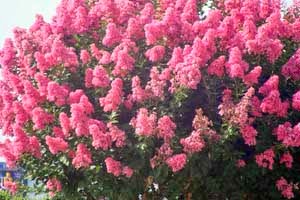 |
| Dandelion is the tap-rooted herb no one can eradicate, so why not include it in compost? |
The Michigander asked about the survival of red wiggler earthworms during the cold winters up north. In a search of the literature, I found a number of experienced vermiculturists on the Net. They said that the red wiggler does not like the cold and will probably die in the winter, but will survive in compost, where the temperature is warmer. Egg cases survive cold and drought, throughout the yard.
We can only speculate about the depth of the next winter. We had a very mild winter followed by last year's harsh winter for NW Arkansas.
Some organic gardeners consider the best contribution of compost is the distribution of egg cases, which survive cold and drought. I have hauled wheelbarrows of compost and distributed earthworms the hard way - I would rather handle the little sack from Uncle Jim's Worm Farm.
I like composting on the spot, with mulch from newspapers, wood, and grass clippings. Weeds also make good mulch. If you think that will spread weeds in your yard, look again - they are already there. Make them pay the ultimate price while shaming them. Weeds have high nitrogen content plus minerals, so they might as well give back what they stole from the garden and borrowed from the sun.
I often put used coffee grounds in the wood mulch, especially if the kitchen trash is ready to overflow and spill it on the floor.
Small gestures do not seem to mean much at first, but over time the recycling of organic matter does add up, and the soil creatures thrive. The soil improvements that are started now will continue during the winter, under a blanket of snow.
Instead of scratching all the stuff from under the bushes, spread cypress mulch around the base to suppress weeds and feed the soil. Bare soil around the bushes will only grow up with weeds, evaporate water faster, and let topsoil blow away in the wind.
 |
| This is from Dave's Garden. Ours is a single bush to be shaped like a vase with a narrow bottom. |
Pruning bushes will make the roots start growing again. Some gardeners will jab a spade into the soil to cut the roots, which is another jump-starter for bushes. Our crepe myrtle bush continues to be in full bloom, with full pink flowers covering it. The top continues to reach upward while forming new flowers.
Fall Anticipated
I have pile of branches in the back of the lot, thanks to another round of trimming. When the leaves fall this autumn, the mulching lawnmower will combine grass and leaves in fragments to feed the soil. Raking leaves was more fun when we burned them along the curb. The backyard leaves will be raked over the garden areas and held down by the branches. Most of the leaves will be consumed by spring and the branches will be hauled away.
Our grandson had a great time again with the roses. He got the rose shears and cut off all the spent blooms. We spent a little time explaining why that helped the roses bloom even more. He learned to distinguish the ones about to bud and those on the way out. A little bump on an old bloom will scatter the petals. I saw him doing that to test some iffy roses. At the end he said, "I learn a lot from you, Grampy."
 |
| Queen Elizabeth Rose - the ultimate bud transforms into the perfect bloom. |
